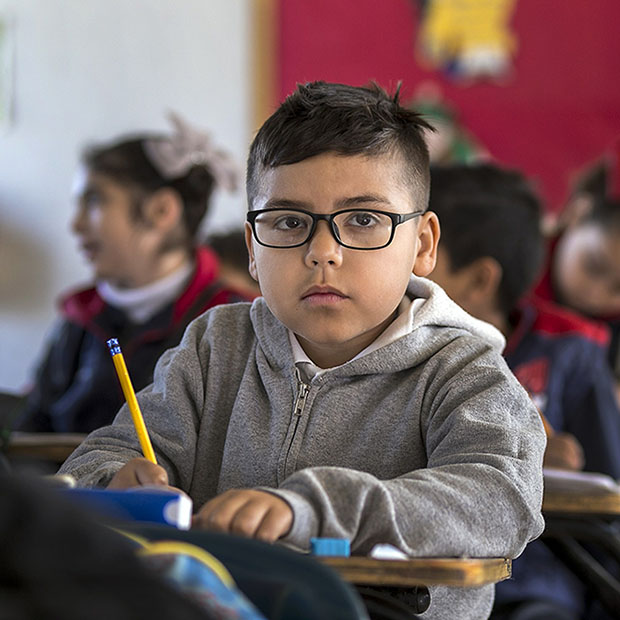Eye Exams: Vital to Your Child’s Education

A staple of every school nurse’s office is the big E eye chart.
That chart, the formal name of which is the Snellen chart (after the 19th-century Dutch eye doctor Herman Snellen who developed it), is certainly a good diagnostic tool for catching nearsightedness, but there are many other things that could be wrong with a child’s eyesight. That’s why a comprehensive eye exam with an optometrist is a must before your child starts school.
How Vision and Learning Are Linked
Sighted people use our vision for up to 80% of our learning. Being able to see clearly and perform visual tasks effectively is enormously important to a developing child’s education, social life, and even how well they do in sports. They spend much of their time in class reading off whiteboards, reading textbooks, and writing in notebooks. All of that requires good vision.
The Vision Problems We Don’t Hear About
If a child has a vision problem other than nearsightedness, there’s a good chance it won’t be diagnosed. This could be farsightedness, color blindness, astigmatism, poor visual perception, poor hand-eye coordination, or problems with binocular vision such as focusing, tracking, and teaming. Any of these problems will make simple tasks in school much harder and less enjoyable.
An Undiagnosed Vision Problem Over Time
When something goes wrong with our eyesight as adults, we usually recognize that there’s a problem and we can describe our experience to the people around us. That’s not what happens with kids. A child experiencing difficulty with visual tasks at school won’t assume the problem is with their eyes; they’ll just think they aren’t smart enough for school, or that learning isn’t fun. Adults often reinforce this mistaken belief because vision problems share so many symptoms with learning disorders that they are often misdiagnosed as them.
Learn to Recognize Common Symptoms of Eye Problems
An eye pointing in the wrong direction is a very easy problem to spot, but many of the symptoms are subtler than that. Keep an eye out for any of the following, which could indicate an undiagnosed eye problem:
- Reading comprehension difficulty
- Trouble completing school work
- Short attention span (especially when it involves close-up work)
- Frequent headaches
- A habit of covering one eye
- Frequent eye rubbing and blinking
- Fidgeting
Even if these symptoms seem like a learning disorder, at least rule out a vision problem as the cause by going to the eye doctor first.
Begin Your Child’s Education Right With an Eye Exam
The sooner a vision problem is diagnosed and treated (whether through glasses, visual therapy, or some other treatment), the less it will be able to negatively impact a child’s education, social life, and any activities they might otherwise enjoy and excel at. With school starting up again, now is the perfect time to schedule a comprehensive eye exam for your child. We’ll be able to diagnose or rule out any lesser-known eye problems that the school nurse would miss with the big E chart and make a treatment plan!